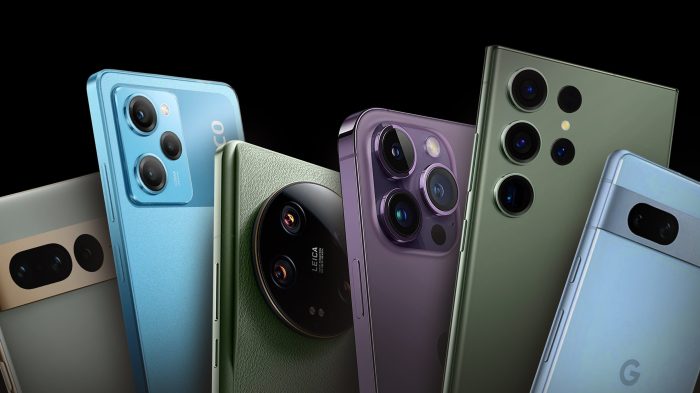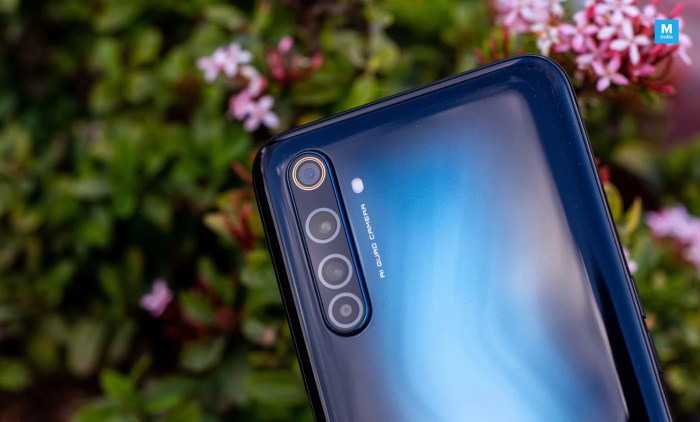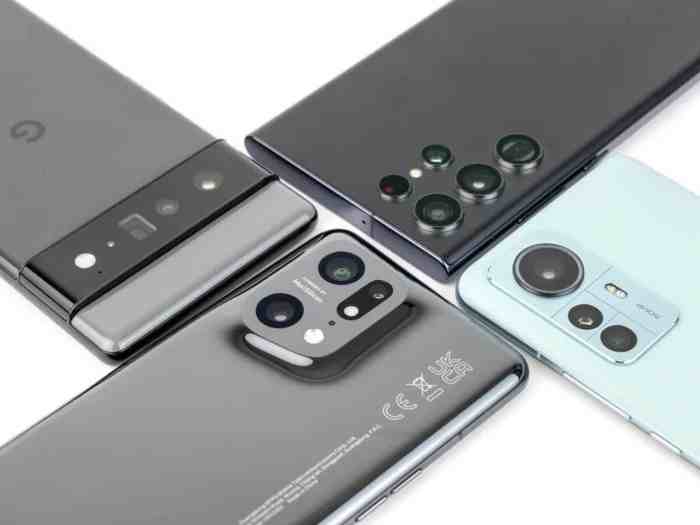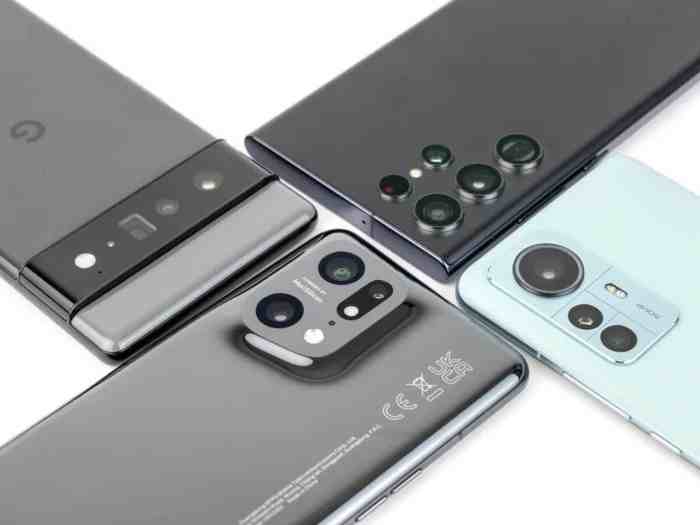Best camera phone under 500 dollars – Best camera phone under $500? Finding a device that balances impressive photographic capabilities with affordability can feel like searching for a needle in a haystack. This guide navigates the complexities of the sub-$500 smartphone market, meticulously examining top contenders and their camera performance across various scenarios. We’ll delve into image quality, video recording capabilities, user interface, battery life, and overall value to help you make an informed decision.
From low-light photography to vibrant daylight shots, we’ll compare image processing algorithms, analyze video stabilization techniques, and explore the ease of use of each camera app. Our in-depth analysis considers various factors to ensure you select the best phone for your needs, whether you’re a casual photographer or a budding mobile cinematographer. We’ll also assess battery performance during intensive camera use, and offer a detailed price-to-performance comparison.
Video Recording Capabilities

Choosing a camera phone under $500 often involves compromises, but several models offer surprisingly capable video recording features. This section will delve into the video capabilities of some top contenders in this price range, comparing their performance across various shooting scenarios. We will focus on resolution, frame rate, stabilization technology, and overall video quality.
Generally, phones in this price bracket offer 1080p (Full HD) video recording as standard, with some offering 4K resolution. However, the quality of that 4K footage can vary significantly depending on the phone’s image processing capabilities and sensor size. Frame rates also play a role; higher frame rates (like 60fps) result in smoother video, particularly beneficial for action sequences. Finally, the effectiveness of electronic image stabilization (EIS) or optical image stabilization (OIS) is crucial for minimizing shakiness, especially when shooting handheld.
Video Resolution and Frame Rates, Best camera phone under 500 dollars
Many phones in this price range boast 1080p video recording at 30 or 60 frames per second (fps). A few models might even offer 4K video recording at 30fps. The higher the resolution and frame rate, the smoother and more detailed the video will be. However, higher resolutions and frame rates often require more processing power, potentially impacting battery life and storage space. For example, a phone might record excellent 1080p at 60fps but struggle to maintain quality at 4K.
Video Stabilization
Effective stabilization is key to producing professional-looking videos. Most phones in this price range utilize electronic image stabilization (EIS), which digitally processes the footage to reduce shakiness. Some higher-end models within this budget may include optical image stabilization (OIS), which uses physical components to stabilize the camera lens, resulting in even smoother video, especially in challenging conditions. The difference between EIS and OIS is noticeable; OIS generally provides superior stabilization, particularly when zooming or panning.
Browse the multiple elements of impact of mobile health technology on patient engagement and satisfaction to gain a more broad understanding.
Video Quality in Various Scenarios
Video quality varies significantly depending on the lighting conditions and the type of scene being recorded. In bright, well-lit conditions, most phones in this price range will produce acceptable video. However, low-light performance often differentiates the best from the rest. Noise reduction algorithms play a crucial role here; better algorithms will result in cleaner footage with less grain in low light. Similarly, action shots test the capabilities of the stabilization system and the phone’s ability to keep up with fast movement. Interview scenarios highlight the phone’s autofocus and audio recording capabilities.
Example Video Descriptions
Let’s imagine three phones, Phone A, Phone B, and Phone C, all priced under $500. Each has unique video strengths:
Phone A Video Description: Phone A excels in low-light conditions, capturing surprisingly detailed footage even in dimly lit environments thanks to its advanced noise reduction. While only offering 1080p, its smooth EIS ensures stable footage, ideal for everyday vlogging.
Phone B Video Description: Phone B offers a compelling combination of 4K recording at 30fps and OIS. The result is crisp, stable footage perfect for capturing cinematic-looking shots. However, its low-light performance is slightly less impressive than Phone A.
Phone C Video Description: Phone C prioritizes high frame rates, recording 1080p at 60fps. This makes it ideal for capturing smooth action sequences, although its stabilization might not be as effective as Phone B’s OIS. Low light performance is average for this price point.
Software and Features

The software powering a camera phone significantly impacts its overall photographic capabilities. Beyond the hardware, the processing algorithms, editing tools, and additional features within the camera app and gallery app determine the final image quality and the ease of use for the average photographer. This section will delve into the software features of several best camera phones under $500, comparing their strengths and weaknesses.
Camera App Features Comparison
A key differentiator among camera phones is the feature set offered within their respective camera applications. Some phones boast advanced AI scene detection, automatically optimizing settings for various subjects (landscapes, portraits, food, etc.). Others might prioritize manual controls, giving users more direct influence over exposure, ISO, and shutter speed. Night modes, designed to capture detailed images in low-light conditions, are increasingly common, employing techniques like multi-frame processing to reduce noise and enhance brightness. Furthermore, the availability of RAW image format support is crucial for advanced users, allowing for greater flexibility in post-processing. For example, the Google Pixel series, often praised for its computational photography, excels in AI scene detection and night mode capabilities, while some phones from brands like Samsung or OnePlus might provide more extensive manual controls and RAW support.
Image Editing Capabilities in Gallery Apps
The native gallery applications on these phones also play a significant role in the overall user experience. These apps often provide basic editing tools like cropping, brightness adjustment, contrast control, and saturation adjustments. More advanced features, such as selective adjustments, filters, and blemish removal tools, can be found in some phones’ gallery apps. The level of sophistication in these editing capabilities varies considerably. For instance, some apps may offer advanced features like AI-powered object removal or perspective correction, while others may stick to more basic functionalities. The ease of use and intuitive design of these editing interfaces are also important factors. A well-designed interface can significantly improve the user experience, even if the features themselves are not exceptionally advanced.
Impact of Software on Image Quality and User Experience
The interplay between hardware and software directly affects image quality. A phone with exceptional camera hardware but weak software processing may produce subpar images. Conversely, clever software algorithms can compensate for some hardware limitations. For example, a phone with a smaller sensor size might rely heavily on software-based noise reduction and dynamic range optimization to achieve decent low-light performance. This is where the computational photography prowess of certain phones shines. The user experience is equally affected. An intuitive camera app with easily accessible features empowers users to capture better photos more easily. A complex and poorly designed interface, on the other hand, can frustrate users, even if the underlying technology is powerful. For instance, a user-friendly interface with clearly labeled controls and a quick access to frequently used features like HDR or portrait mode can significantly enhance the overall photographic experience.
Specific Use Cases: Best Camera Phone Under 500 Dollars

Choosing the right camera phone often hinges on how you intend to use it. Different phones excel in different photographic scenarios, so understanding these strengths and weaknesses is crucial for making an informed purchase. This section will examine how phones in the sub-$500 range perform in various common use cases, providing examples to illustrate their capabilities.
Landscape Photography
Landscape photography demands a wide field of view, good dynamic range (the ability to capture detail in both bright and dark areas), and sharp detail across the entire image. Phones in this price range often achieve satisfactory results, though high-end features like dedicated image stabilization might be absent. For instance, a phone with a wider-angle lens, like some models featuring a 120-degree field of view, will capture more of the landscape in a single shot compared to phones with narrower lenses. However, image sharpness at the edges of a wider-angle shot can sometimes suffer, requiring careful composition to minimize distortion. Conversely, phones with better image processing algorithms can compensate for some of these limitations, producing more detailed and vibrant landscapes even with less-than-ideal hardware. A comparison between two hypothetical phones, Phone A with a 120-degree lens and Phone B with a more standard 78-degree lens and advanced image processing, might show Phone A capturing a more expansive view, while Phone B delivers sharper detail across the frame.
Macro Photography
Macro photography, the art of capturing extremely close-up shots, reveals the limitations of many budget phones. While some phones boast dedicated macro lenses, the quality can vary significantly. A good macro lens should provide sharp focus at very close distances, revealing intricate details. However, budget macro lenses often struggle with focus accuracy and may produce soft or blurry images. For example, a comparison might show Phone C, with a dedicated macro lens, producing detailed images of a flower’s pollen, while Phone D, lacking a dedicated macro lens, struggles to achieve the same level of sharpness and detail, even when using digital zoom. The difference in image quality can be dramatic, highlighting the importance of checking sample images before purchase if macro photography is a priority.
Low-Light Portrait Photography
Low-light portrait photography presents a significant challenge for camera phones, regardless of price. Image quality can degrade considerably due to increased noise (graininess) and loss of detail. However, some phones in the sub-$500 range incorporate features designed to mitigate these issues, such as larger sensor sizes or advanced night modes. For instance, Phone E, with a larger sensor and a dedicated night mode, might produce a usable portrait image in low light, retaining acceptable detail and minimizing noise. In contrast, Phone F, with a smaller sensor and less sophisticated software, may produce a significantly noisier and less detailed image, potentially lacking sharpness in the subject. The effectiveness of these low-light features often depends on the scene’s lighting conditions and the subject’s stillness.
Ultimately, the “best” camera phone under $500 depends on your individual priorities. This comprehensive guide has highlighted the strengths and weaknesses of several leading contenders, providing a framework for making a decision based on your specific photography style and budget. Whether you prioritize low-light performance, video stabilization, or ease of use, we hope this review empowers you to choose the device that best captures your vision within your price range. Happy shooting!
FAQ Corner
What about storage space on these phones?
Storage varies by model; check specifications before purchasing. Many offer expandable storage via microSD card.
Do these phones have good zoom capabilities?
Zoom capabilities differ. Some offer digital zoom, others optical zoom; review specifications for details.
Are there any phones with water resistance in this price range?
Some models offer water resistance (check IP ratings); however, this isn’t a universal feature at this price point.

